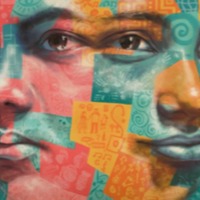
Amanthi K.
There are an estimated 61,000 people living in modern slavery in Saudi Arabia (GSI 2018). It is a source and destination country for men and women trafficked from South and South East Asia and Africa. People voluntarily migrate to the country to work in a variety of sectors including construction and domestic service; many of these workers are vulnerable to forced labour. Traffickers and brokers often illegally recruit migrants to work in Saudi Arabia and subsequently forced them into domestic servitude or debt bondage. Female domestic workers are particularly at risk of trafficking due to their isolation inside private residences. Non-payment or late payment of wages remains a complaint from foreign workers, while employer's withholding of worker's passports remains a significant problem. Trafficking perpetrators include businesses of all sizes, private families, recruitment companies in both Saudi Arabia and labor-sending countries, and organized criminal elements.Amanthi K. travelled to Saudi Arabia for work where she was trapped in domestic servitude. She became pregnant after her employer raped her and was sentenced to nine months in prison for adultery in 2006. Amanthi K. reported that there was an interpreter between Arabic and Sinhala, but that she had no lawyer. The Saudi authorities did not provide her with an opportunity to notify the Sri Lankan mission about her case and she had no contact or assistance from them during her ordeal.
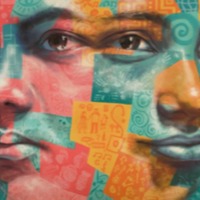
Brinda
The Global Slavery Index 2018 estimates that on any given day there were nearly 8 million people living in modern slavery in India. The GSI 2018 reports an emerging trend in northeast India where organised trafficking syndicates operate along the open and unmanned international borders, duping or coercing young girls seeking employment outside their local area in to forced sexual exploitation. Many women and girls are lured with the promise of a good job but then forced in to sex work, with a 'conditioning' period involving violence, threats, debt bondage and rape. Brinda* was kidnapped and sold to a man who forced her into prostitution in Delhi. She was beaten and subjected to sexual exploitation daily.
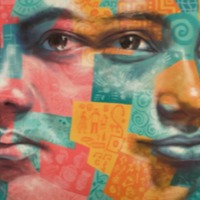
Terry Forliti
There are an estimated 403,000 people living in modern slavery in the United States (GSI 2018). Sex trafficking exists throughout the country. Traffickers use violence, threats, lies, debt bondage and other forms of coercion to compel adults and children to engage in commercial sex acts against their will. The situations that sex trafficking victims face vary, many victims become romantically involved with someone who then forces them into prostitution. Others are lured with false promises of a job, and some are forced to sell sex by members of their own families. Victims of sex trafficking include both foreign nationals and US citizens, with women making up the majority of those trafficked for the purposes of commercial sexual exploitation. In 2015, the most reported venues/industries for sex trafficking included commercial-front brothels, hotel/motel-based trafficking, online advertisements with unknown locations, residential brothels, and street-based sex trafficking. A series of traumatic events lead to a 30-year drug addiction for Terry Forliti. After her addiction lead to the breakdown of an abusive marriage, Terry found herself on the streets. She met a man who would eventually become her pimp and force her into prostitution for the next five years. Terry was eventually arrested and while spending time in jail was introduced to the Breaking Free organization who offered a housing programme to poor mothers trapped in prostitution. Terry spent three years in the programme, obtained a BA and began working for the organization helping others who had been through similar experiences
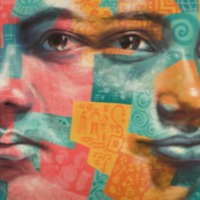
Susan A
There are an estimated 403,000 people living in modern slavery in the United States (GSI 2018). Sex trafficking exists throughout the country. Traffickers use violence, threats, lies, debt bondage and other forms of coercion to compel adults and children to engage in commercial sex acts against their will. The situations that sex trafficking victims face vary, many victims become romantically involved with someone who then forces them into prostitution. Others are lured with false promises of a job, and some are forced to sell sex by members of their own families. Victims of sex trafficking include both foreign nationals and US citizens, with women making up the majority of those trafficked for the purposes of commercial sexual exploitation. In 2015, the most reported venues/industries for sex trafficking included commercial-front brothels, hotel/motel-based trafficking, online advertisements with unknown locations, residential brothels, and street-based sex trafficking. Susan was 16 years old when she was forced into prostitution by her boyfriend whom she thought she would be with forever. She talks here about the need for greater education on commercial sexual exploitation in schools and in the prison system to prevent trafficking of young girls. She also talks about ways to support women after their trafficking experience, highlighting the need for employment, housing and counselling.
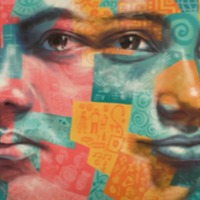
Dee
There are an estimated 9000 people living in modern slavery in Lesotho (GSI 2018). Traffickers exploit domestic and foreign victims in the country, as well as trafficking people from Lesotho abroad. Basotho children are trafficked into domestic servitude and animal herding, especially orphans who migrate to urban areas, in sex trafficking. Basotho women and girls wanting to migrate to South Africa are also often detained by traffickers in prison-like conditions and forced into sexual exploitation. Dee came into the care of Beautiful Dream Society after she was falsely promised a job. Instead she was kidnapped, held against her will and raped repeatedly before being left for dead. With the help of a woman who gave her money, Dee was able to go to the police and have her abuser arrested.
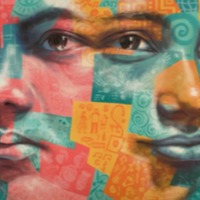
Tina B
There are an estimated 403,000 people living in modern slavery in the United States (GSI 2018). Sex trafficking exists throughout the country. Traffickers use violence, threats, lies, debt bondage and other forms of coercion to compel adults and children to engage in commercial sex acts against their will. The situations that sex trafficking victims face vary, many victims become romantically involved with someone who then forces them into prostitution. Others are lured with false promises of a job, and some are forced to sell sex by members of their own families. Victims of sex trafficking include both foreign nationals and US citizens, with women making up the majority of those trafficked for the purposes of commercial sexual exploitation. In 2015, the most reported venues/industries for sex trafficking included commercial-front brothels, hotel/motel-based trafficking, online advertisements with unknown locations, residential brothels, and street-based sex trafficking. Tina B left home with the man she thought was her boyfriend at 14 years old. He trafficked her into commercial sexual exploitation. Tina B was raped daily. She went to the police for help, but instead they arrested her and placed her into juvenile detention for prostitution.
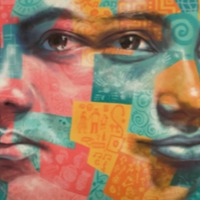
DH
There are an estimated 4,000 people living in modern slavery in Qatar (GSI 2018). Qatar is a destination country for men and women subjected to forced labour and, to a much lesser extent, forced prostitution. Men and women from Nepal, India, Pakistan, Bangladesh, the Philippines, Indonesia, Sri Lanka, Sudan, Kenya, Nigeria, Uganda, and other countries voluntarily migrate to Qatar as unskilled laborers and domestic workers, often paying illegal and exorbitant fees to unscrupulous recruiters in the labour-sending countries, thereby increasing their vulnerability to debt bondage. Some workers subsequently face conditions indicative of involuntary servitude, to include restricted movement, payment withholding, passport confiscation, exit permit retention, and threats of deportation or abuse. Individuals in Qatar sell visas to migrants and occasionally demand regular payments, enabling migrant workers to work illegally and without legal recourse against their respective sponsors, although reportedly this trend is on the decline. DH, was arrested after the police realised she was having a relationship with her employer.
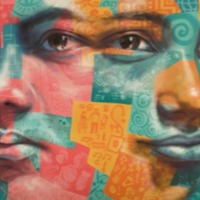
Analyn
There are an estimated 4,000 people living in modern slavery in Qatar (GSI 2018). Qatar is a destination country for men and women subjected to forced labour and, to a much lesser extent, forced prostitution. Men and women from Nepal, India, Pakistan, Bangladesh, the Philippines, Indonesia, Sri Lanka, Sudan, Kenya, Nigeria, Uganda, and other countries voluntarily migrate to Qatar as unskilled laborers and domestic workers, often paying illegal and exorbitant fees to unscrupulous recruiters in the labour-sending countries, thereby increasing their vulnerability to debt bondage. Some workers subsequently face conditions indicative of involuntary servitude, to include restricted movement, payment withholding, passport confiscation, exit permit retention, and threats of deportation or abuse. Individuals in Qatar sell visas to migrants and occasionally demand regular payments, enabling migrant workers to work illegally and without legal recourse against their respective sponsors, although reportedly this trend is on the decline. ‘Analyn', a 46-year-old woman from the Philippines, reported her rape to the police, which resulted in a charge of “illicit relations”, sometimes called a “love crime”, applied to people accused of having consensual sexual relations outside marriage. In December 2013, Analyn was sentenced to a year in prison
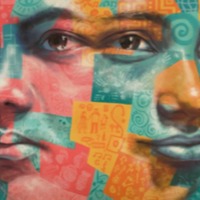
Morium
There are an estimated 6000 people living in conditions of modern slavery in Kuwait. Men and women migrate from South and Southeast Asia, Egypt, the Middle East, and increasingly throughout Africa to work in Kuwait, predominantly in the domestic service, construction, hospitality, and sanitation sectors. The vast majority of migrant workers arrive voluntarily; however, upon arrival some sponsors subject migrants to forced labour, including through non-payment of wages, protracted working hours without rest, deprivation of food, threats, physical or sexual abuse, and restrictions on movement, such as confinement to the workplace and the withholding of passports. Many of the migrant workers arriving in Kuwait have paid exorbitant fees to labour recruiters in their home countries or are coerced into paying labour broker fees in Kuwait which, according to Kuwaiti law, should be paid by the employer—a practice making workers highly vulnerable to forced labour, including debt bondage. To a lesser extent, migrant women are also subjected to forced prostitution. Morium travelled to Kuwait in search of work to improve her situation. She arranged a visa through her neighbour’s father and migrated to work as a maid. Upon arrival, she was taken to her employer. As the only maid, Morium was forced to do everything, working long hours with no breaks, she was denied food and subjected to physical and sexual abuse. Morium was able to escape one day when the son of the family left the front door open, she was soon arrested and sent back to Bangladesh.
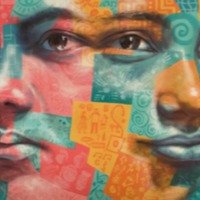
Champa
There are an estimated 3000 people living in conditions of modern slavery in Bahrain (GSI 2018). Men and women, primarily from Bangladesh, Pakistan, India and Philippines (among other countries) migrate voluntarily to work as semi-skilled or unskilled labourers in the construction of service industries. Some of these workers are subjected to forced labour, suffering conditions such as passport retention, confinement, non-payment of wages, and physical and sexual abuse. Those employed in domestic work are particularly vulnerable as they are only partially protected under Bahrain labour law, and cultural norms and existing legal infrastructure avert private home inspection. Champa, a 30 year old woman and mother of 3 children went to Bahrain in 2000 to work as a maid. Though for a while everything was fine, after a couple of weeks the husabnd of the family began to come to her at night for sex. Once his wife found out, Champa was thrown out of the house, arrested accused of theft and spent 5 months in jail. Champa was not paid for her work and returned to Bangladesh with nothing.